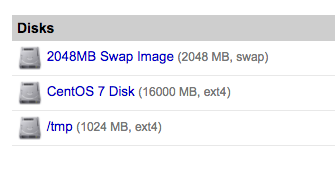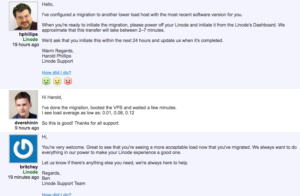yum upgrades for production use, this is the repository for you.
Active subscription is required.
Little did you know that we host this project on a very tiny Linode VPS that runs at $5 monthly.
Why do I love it so much besides for being so damn cheap?
Best availability
Linode has never given me uptime problems. And I hope this will never change. Linode as VPS provider has been around for years and they are always one head above others in terms of being more trustworthy. I trust my data to them.
Control your disks.
Linode has an amazing interface for partitioning your virtual server’s disk space! And this essentially lets me give this tiny server a sizeable swap space and structure my server’s data better for security and maintainability!

Linux kernel choice.
Linode maintains its own up-to-date Linux kernels. But you are free to use your distribution’s latest kernel instead. That’s great!
PTR record setup.
If you send emails from your server (and most of you do) you really want to have proper PTR record for your server’s IP address. And again, Linode got you covered – it’s so easy to set up one from their Linode Manager!

Top-notch support.
When I started going live with GetPageSpeed at Linode, my concern was with load time being slightly above expected.
I have opened a support ticket and within a day my issue was resolved. Those guys know their customers and how to make things run fast.

Neat API
You don’t have to actually use a browser to manage your Linodes.
You can create, boot, shutdown and destroy your Linodes easily via a command-line client.
This is very amazing for automation and testing those things where a Docker container is not enough.
For example you want to check your Ansible playbook, that requires testing against a real VPS.
The official Linode CLI client can be installed easily with pip-safe on RHEL-based systems:
sudo yum -y install https://extras.getpagespeed.com/release-latest.rpm
sudo yum -y install pip-safe
pip-safe install linode-cli
Now run one-time linode-cli configure to set up your CLI authentication with Linode.
Next up, you can do things like:
linode-cli linodes list
Or,
linode-cli linodes create --label ansible-test-el7-webservers --root_pass hackmegently101
Use linode-cli --help for documentation of available commands.

